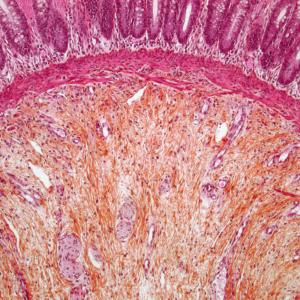
The ISCHEMIA study, led by cardiologist Dr. Judith S. Hochman, finds that medical therapy alone produces similar results as more aggressive approaches.
Photo: NYU Langone Staff
Ischemic heart disease, the leading cause of death and disability worldwide, affects 17.6 million Americans and results in approximately 450,000 deaths per year in the United States. A major international study led by NYU Langone Health researchers suggests that for many of these patients, commonly recommended invasive approaches should be used more sparingly.
An Unparalleled Investigation
The International Study of Comparative Health Effectiveness with Medical and Invasive Approaches (ISCHEMIA) was intended to settle longstanding questions over the most advantageous treatment of patients with stable ischemic heart disease (SIHD). Funded by the National Heart, Lung, and Blood Institute, the $100 million trial was twice as large as any previous study of its kind—enrolling more than 8,000 patients and randomizing 5,179 at 320 sites in 37 countries.
“For decades, clinicians have routinely recommended invasive procedures for patients with moderate to severe ischemia,” explains Judith S. Hochman, MD, the Harold Snyder Family Professor of Cardiology in the Department of Medicine and senior associate dean for clinical sciences, who chaired the ISCHEMIA trial with co-chair David Maron, MD, director of preventive cardiology at the Stanford Prevention Research Center at Stanford University. “More recently, studies such as COURAGE and BARI 2D have shown no benefit to stenting over medication alone for patients with stable disease, but those trials were criticized for certain design features, such as post-angiogram randomization, inclusion of patients with mild or no ischemia, and the use of older-generation stents,” Dr. Hochman adds. “Our goal was to address those concerns and to see what the data revealed.”
Enrollment for ISCHEMIA began in 2012. Exclusion criteria were recent myocardial infarction, unstable angina within the past two months, heart failure, poor pump function–low ejection fraction, and left main coronary stenosis. Patients who qualified were randomized to either an initial conservative or an initial invasive strategy. The conservative group initially received only optimal medical therapy (OMT), consisting of medication and lifestyle counseling—with cardiac catheterization and revascularization reserved for failure of medical therapy. The invasive group also received OMT, but underwent angiography and either percutaneous coronary intervention with drug-eluting stents or (if indicated) coronary artery bypass grafting soon after diagnosis via stress test or other means.
Due to a lower-than-anticipated number of cardiovascular deaths and myocardial infarctions in both groups, the primary endpoint was expanded to include hospitalization due to unstable angina, hospitalization for heart failure, and resuscitation due to cardiac arrest, as pre-specified in the protocol. Patients were followed for a median of 3.3 years.
Potentially Paradigm-Shifting Results
Presented by Dr. Hochman in November 2019 at the American Heart Association’s Scientific Sessions in Philadelphia, ISCHEMIA’s results showed no advantage for routine invasive therapy over OMT alone in preventing major adverse ischemic events. Rates of the primary endpoint did not differ significantly between cohorts: 13.3 percent in the invasive group and 15.5 percent in the conservative group. Event curves over five years showed that the invasive group had more cardiovascular events in the first two years, while the conservative group had more in years three through five. Rates of all-cause death were also similar for both cohorts—6.5 percent for the invasive group, and 6.4 percent for the conservative group.
ISCHEMIA did, however, find significant differences in angina relief. Among patients with monthly angina at baseline, 70 percent of the invasive group were angina-free at 1 year, compared with 40 percent of patients on OMT. For patients with daily or weekly angina, 50 percent of those treated invasively were angina-free at 1 year, versus 20 percent in the OMT group.
“These results indicate that, while stenting may be more effective for symptom control, there’s no added risk of major negative outcomes with a conservative approach for patients who meet the criteria included in the study,” observes Glenn I. Fishman, MD, the William Goldring Professor of Medicine and director of the Leon H. Charney Division of Cardiology at NYU Langone. “If patients treated with OMT continue to have angina that is interfering with their lifestyles, they may choose to have an angiogram and, if appropriate, have a stent placed. But it’s not a life-or-death decision.”
The implications of these findings for clinical practice and healthcare spending could be significant, the researchers suggested. Of the approximately 500,000 coronary stent procedures performed each year in the United States, they estimated, 20 percent are for patients with stable heart disease. Among the latter, 24 percent—about 23,000—are performed on patients without symptoms. If those procedures were avoided, the team concluded, the cost savings could be at least $570 million annually.
“This trial provides very important information for patients and their doctors to use in shared decision-making,” Dr. Hochman notes. “They can now weigh the potential risks and benefits of treatment options more accurately. Together, they can choose the strategy that best fits each patient’s needs.”
